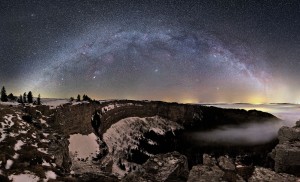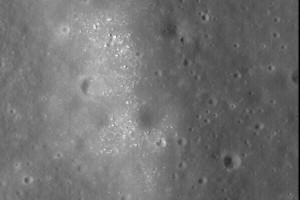
Arlene and I just returned from three days in Mendocino, on the northern California coast. It had been foggy recently—a very common thing in Mendocino—but during our stay it was completely cloudless. And no moon! A stargazer’s paradise. I walked down the street to where there weren’t any nearby lights and looked up. And there it was! The magical mystical Milky Way: the combined glow of billions of stars in our own galaxy.
The Milky Way is magical to me because I can’t see it at home. There is so much artificial nighttime light in the Bay Area that only the brightest stars are visible. The Milky Way is still there, of course, RIGHT THERE, EVERY DAMN NIGHT, AND I CAN’T SEE IT.
My brother and I were both interested in astronomy at an early age. Every weekend we went around the neighborhood collecting used newspapers in the old red wagon, which we stacked up in our garage. Once we had accumulated a carload, we’d pile them into our Chevrolet station wagon and Dad would drive us into Oakland to the recycle yard. (I’m sure Dad spent more in gas, not to mention in his time, than we made selling the newsprint. He was generous that way.) After about two years, we took the money we had saved and bought a small telescope. I still remember the first night we used it and saw Saturn.
But we couldn’t see the Milky Way! Suburban Fremont in the mid-1960s already had way too much light pollution. Pretty much the only time I got to see the Milky Way as a lad was during Boy Scout summer camp, far from the city lights. Â And as an adult, I still have to journey far to see it: this week was the first time I’d seen the Milky Way in several years. It’s one of the prices we pay to live in the city, and one of the reasons I often fantasize about living out of it.
